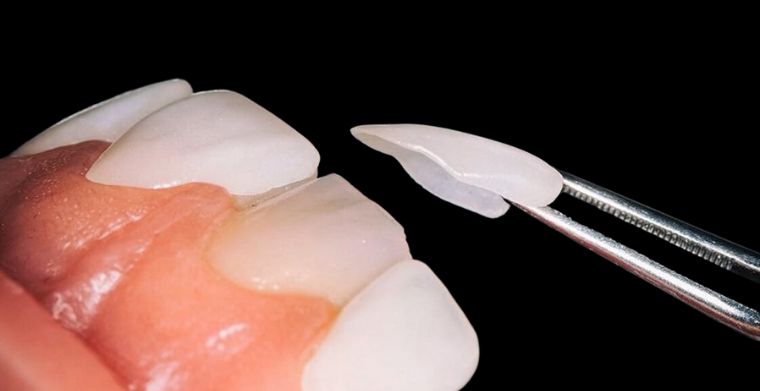
Getting a cosmetic dental treatment can transform your smile and boost your confidence. Whether you've had teeth whitening, veneers, dental bonding, or another cosmetic procedure, maintaining the results is essential to enjoy a lasting, radiant smile. Here’s a guide on caring for your smile after your cosmetic dental treatment to keep it looking its best.
Follow a Regular Oral Hygiene Routine
Maintaining the results of any cosmetic dental procedure requires a consistent oral hygiene regimen. Plaque accumulation can erode the luster of your teeth and interfere with any cosmetic procedures, so brushing and flossing every day can help avoid it.
Brush Twice Daily: Use a soft toothbrush and a fluoride toothpaste. Make sure to brush gently to avoid damaging the sensitive areas.
Floss Every Day: Flossing daily removes food particles and plaque from between teeth, keeping your gums healthy and preventing decay in hard-to-reach areas.
Use Mouthwash: An antibacterial mouthwash can help maintain fresh breath and kill bacteria that lead to plaque buildup.
Watch Your Diet for Staining and Damage
The foods and beverages you consume following a cosmetic dental procedure can greatly impact your smile. To preserve your results, you should limit the foods and drinks that are more prone to discoloring or harming your teeth.
Limit Staining Beverages: Drinks like coffee, tea, red wine, and sodas can discolor your teeth over time. If you do indulge, try to use a straw to minimize contact with your teeth, or rinse with water afterward.
Avoid Hard and Sticky Foods: Hard foods like ice or candies can chip dental work like veneers or bonding. Avoid sticky foods, such as caramel as it can get trapped around dental work and are difficult to clean away.
Consume Tooth-Friendly Foods: Fresh fruits and vegetables help clean your teeth naturally and provide essential nutrients for your oral health. Dairy products like cheese and yogurt are high in calcium, which strengthens your teeth.
Schedule Regular Dental Checkups
Regular visits to your dentist are important in keeping your smile looking its best. During these checkups, your dentist can examine your teeth and any cosmetic work for signs of wear, damage, or staining.
Routine Cleanings: Professional teeth cleaning removes plaque and tartar buildup that regular brushing can’t reach, helping to maintain a bright and healthy smile.
Check for Damage: During your appointment, your dentist will check the condition of your cosmetic work, such as veneers or bonding, and ensure they remain intact.
Adjustments as Needed: If you’ve had treatments like braces or clear aligners, your dentist may recommend wearing a retainer to prevent shifting and maintain your alignment.
Protect Your Teeth from Grinding and Clenching
If you are prone to grind or clench your teeth, known as bruxism, it can damage cosmetic dental work over time. Grinding wears down tooth enamel and can even crack or chip dental restorations.
Wear a Night Guard: A custom-made night guard can protect your teeth and dental work while sleeping.
Manage Stress: Stress is the most common cause of bruxism. Try relaxation exercises like deep breathing, meditation, or regular exercise to help reduce stress.
Avoid Chewing on Hard Objects: Chewing on pens, fingernails, or hard snacks can damage teeth over time. Be mindful of this habit to avoid unnecessary pressure.
Avoid Smoking and Tobacco Products
In addition to discoloring your teeth, smoking raises your risk of gum disease and has negative effects on your general health. Avoiding tobacco products after a cosmetic dental procedure is crucial to preserving the look and health of your smile.
Quit Smoking: Smoking causes deep stains that are difficult to remove, even with professional cleanings.
Choose Alternatives: If you’re trying to quit, consider alternatives like nicotine gum or patches. Many support programs are also available to help you stay tobacco-free.
Use Whitening Toothpaste for Maintenance
If your cosmetic treatment involves teeth whitening, using a whitening toothpaste can help you maintain that brightness longer. These toothpaste are formulated to gently remove surface stains and preserve the whiteness of your smile without being abrasive.
Choose a Non-Abrasive Toothpaste: Abrasive toothpaste can scratch your enamel, which may lead to staining over time.
Avoid Overuse: Whitening toothpaste can be effective, but avoid overusing it, as it may cause sensitivity if used too frequently.
Be Mindful of Retainer Use After Orthodontic Treatments
If your cosmetic treatment involved braces or aligners to straighten your teeth, a retainer will help keep them in place after treatment. Consistently wearing your retainer, as your dentist recommends, will prevent shifting and preserve your results.
Clean Your Retainer Daily: Bacteria can build up on your retainer, so clean it regularly using water and a gentle cleanser recommended by your dentist.
Store It Properly: To avoid damage or contamination, always keep your retainer in a protective case when it’s not in use.
A few lifestyle changes and regular care are necessary to preserve the effects of your cosmetic dentistry procedure. By following these guidelines, you can preserve your smile and safeguard your investment in oral health and beauty. Adopt these easy habits and reap the rewards of a confident, glowing smile for many years!
Contact a dentist for details on cosmetic dentistry treatment options and smile maintenance advice. They can help you choose the best care for your particular needs.